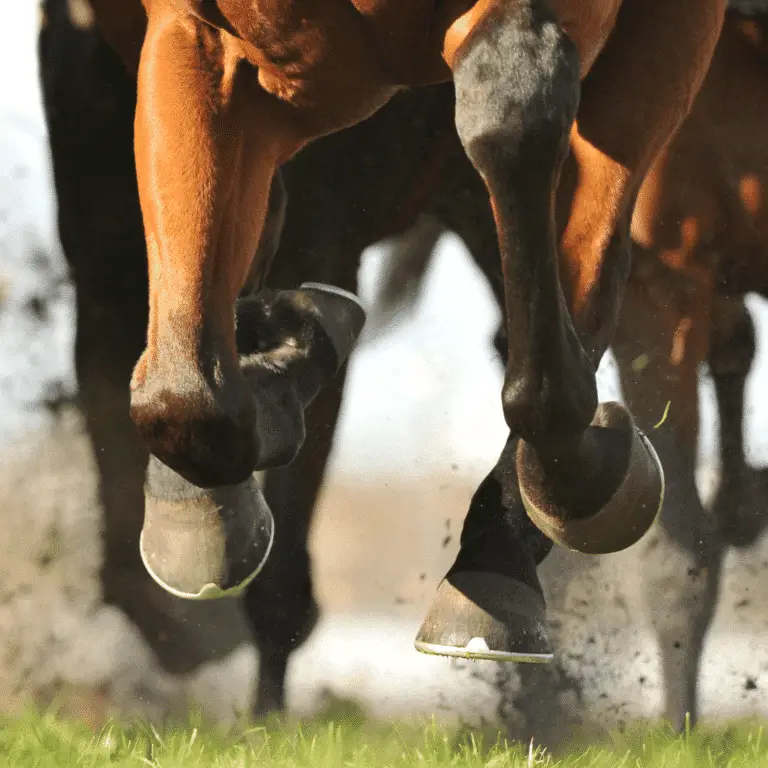
Sheared Heels
Sheared Heels in Horses Seek veterinary advice before applying any treatment. Sheared heels can be defined as a hoof capsule

Seek veterinary advice if you suspect this disease.
A corn is a bruise that forms between the sensitive and insensitive layers of the sole of the foot. The most common site affected is known as the ‘seat of corn’ which is located between the hoof bar and wall, near the heels. Corns develop as a consequence of focal points of pressure, such as from the heel of a shoe as a poorly fitting shoe presses on the sole. Poor conformation such as under-run heels or a poorly balanced foot with uneven loading across the heels will also predispose the horse to develop corns.
Treatment of sole bruising is intended to remove pressure and protect the bruised area. Proper shoeing with branches that fit well on the hoof wall at the quarters and heels (and extend to the caudal aspect of the buttress) will decrease the incidence of lesions.
In horses predisposed to bruising due to dropped soles, the application of a wide-webbed shoe bevelled on the solar surface (made concave relative to the solar surface) to avoid solar pressure will help protect the sole. Additionally, a pad can be placed on the foot to protect the sole. In horses with painful corns, the affected heel can be unweighted by trimming the wall and insensitive sole to minimize contact with the shoe until healed; a bar shoe can also help disperse pressure away from the trimmed area. Anti-inflammatory analgesic medication may be given in the early stage to ease the pain.
Unfortunately, there is no specific cause linked to corns. However, regular maintenance and trimming can help avoid the condition and help with early detection.
Attention should always be paid to the surfaces over which horses are exercised as hard, concussive going, such as roads, will increase the likelihood of developing corns.

Digital health management offers numerous benefits in modern equine healthcare.
With the Happie Horse App, you can track symptom patterns and body values, such as Temperature, Pulse and Respiration. Allowing you to notice abnormal changes in body and behaviour early on, leading to more successful treatments.
The Happie symptom checker allows you to add all of your horse’s abnormal symptoms in order to present potential causes and diseases.

Sheared Heels in Horses Seek veterinary advice before applying any treatment. Sheared heels can be defined as a hoof capsule

Nail Prick in Horses Seek veterinary advice before applying any treatment. Nail prick is the term used when the nail

Heel Bulb Laceration in Horses Seek veterinary advice before applying any treatment. Lacerations of traumatic origin that occur in the